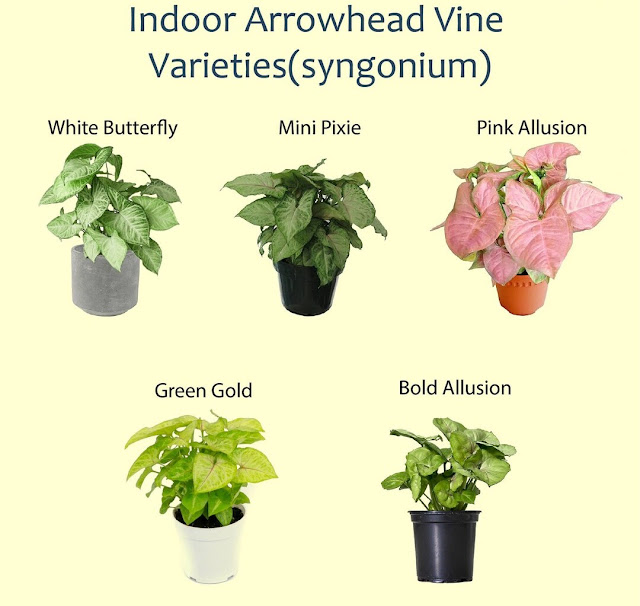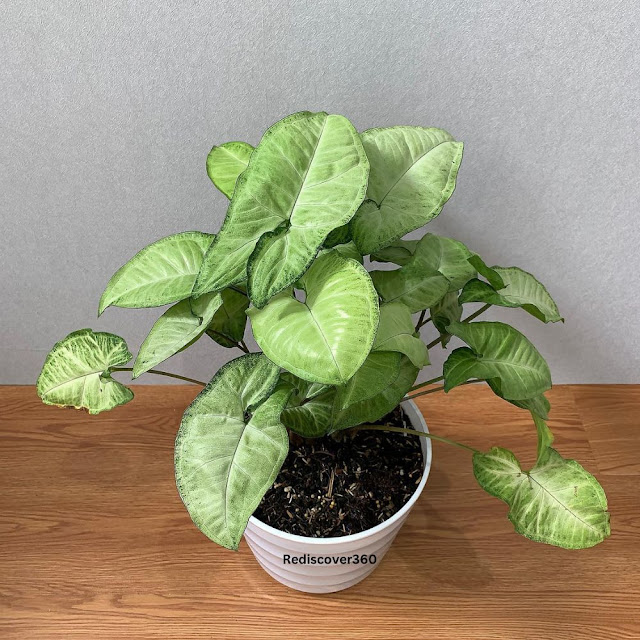Arrowhead Vine Plants : Upgrade Your Indoor Garden
The Arrowhead Vine plant, also known as the Nephthytis or Syngonium, is a popular houseplant native to Central and South America. There are several varieties of Indoor Arrowhead Vine, each with its unique characteristics and coloring. Some popular varieties include White Butterfly, Mini Pixie, Pink Allusion, Green Gold, and Bold Allusion.
White Butterfly
The White Butterfly variety of Indoor Arrowhead Vine features large, glossy green leaves with white and cream variegation. The leaves are arranged in a rosette pattern and can grow up to 8 inches in length. This variety of Arrowhead Vine is a slow grower and is tolerant of low light conditions.
Mini Pixie
The Mini Pixie variety of Indoor Arrowhead Vine is a miniature version of the traditional Arrowhead Vine. It has small, glossy green leaves with white variegation and can grow up to 6 inches in length. This variety is perfect for terrariums or small spaces and is also tolerant of low-light conditions.
Pink Allusion
The Pink Allusion variety of Indoor Arrowhead Vine has bright pink new growth that fades to green as the leaves mature. The leaves are glossy and can grow up to 8 inches in length. This variety prefers bright, indirect light and high humidity to thrive.
Green Gold
The Green Gold variety of Indoor Arrowhead Vine features large, glossy green leaves with gold variegation. The leaves are arranged in a rosette pattern and can grow up to 8 inches in length. This variety prefers bright, indirect light and high humidity to thrive.
Bold Allusion
The Bold Allusion variety of Indoor Arrowhead Vine has large, glossy green leaves with white variegation. The leaves are arranged in a rosette pattern and can grow up to 8 inches in length. This variety prefers bright, indirect light and high humidity to thrive.
Arrowhead Vine Plant Care
Propagation:
Indoor Arrowhead Vine can be propagated through stem cuttings. To propagate:
Take a stem cutting with a few leaves and remove the bottom leaves.
Dip the cutting in the rooting hormone and place it in a well-draining soil mixture.
Keep the soil moist and in bright, indirect light until roots have formed and new growth appears.
It is also possible to propagate through air layering, a method of rooting a stem while it is still attached to the parent plant.
Pests and Diseases:
Indoor Arrowhead Vine is susceptible to common houseplant pests such as spider mites, mealybugs, and scale insects. These can be controlled with a mixture of water, dish soap, or a pesticide specifically designed for houseplants. The plant can also suffer from root rot if overwatered, or the soil needs to be well-draining. Let the soil dry out slightly before watering again to prevent root rot.
Growing Tips:
Keep your Indoor Arrowhead Vine in a location with bright, indirect light.
Keep the humidity around the plant above 50%.
Allow the top inch of soil to dry out before watering.
Fertilize your plant every 4-6 weeks during the growing season with a balanced, water-soluble fertilizer.
Prune your Indoor Arrowhead Vine to control its size and shape, and remove any yellow or dead leaves as they appear.
Keep the plant away from drafts and sudden temperature changes.
Report your Indoor Arrowhead Vine every two years or when it becomes root bound in its current pot.
Be sure to use a well-draining soil mixture high in organic matter.
Train your Indoor Arrowhead Vine to climb support or allow it to trail down the sides of a hanging basket for a unique display.
Decorating with Indoor Arrowhead Vine Plants:
Arrowhead Vine plants can be used in various ways to add a touch of tropical elegance to your home. It can be trained to climb support or trail down the sides of a hanging basket for a unique display. It can also be used in terrariums or as a table centerpiece in a decorative pot. The different varieties can be combined for a striking contrast of colors and patterns.
In summary, Indoor Arrowhead Vine is a great addition to any indoor garden. It is easy to care for and can be propagated through stem cuttings or air layering. It requires bright, indirect light, high humidity, and well-draining soil to thrive. It is also susceptible to common houseplant pests and diseases, but these can be easily controlled. Its unique foliage and ease of care make it a great addition to any home.
Conclusion
Indoor Arrowhead Vines are a great choice for adding a touch of tropical elegance to your home. Each variety has unique characteristics, from the White Butterfly's white and cream variegation to the Pink Allusion's bright pink new growth. These plants are easy to care for and thrive in bright, indirect light and high humidity.
Frequently Asked Questions
Q: Can I grow Indoor Arrowhead Vine outside?
A: Indoor Arrowhead Vine is native to Central and South America and is not tolerant of frost. Therefore it should be grown indoors.
Q: How much light does Indoor Arrowhead Vine need?
A: Indoor Arrowhead Vine prefers bright, indirect light but can tolerate low light conditions.
Q: How often should I water my Indoor Arrowhead Vine?
A: Water your Indoor Arrowhead Vine when the top inch of soil is dry. Overwatering can cause root rot, so let the soil dry out before watering again.
Learn more about Syngonium Pink Plants









Comments
Post a Comment